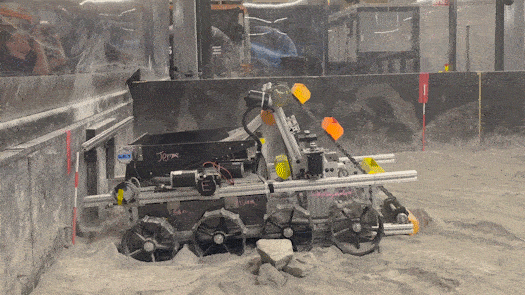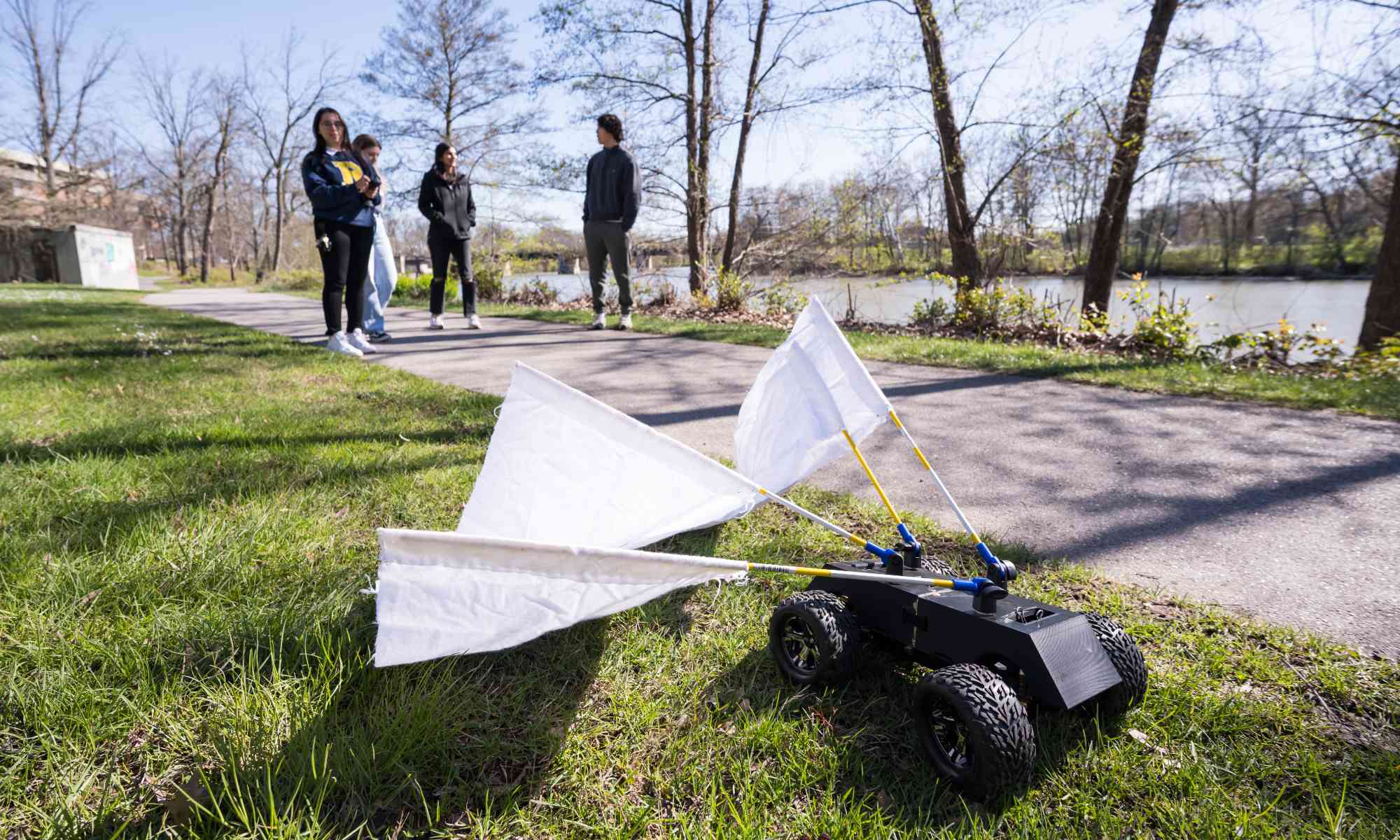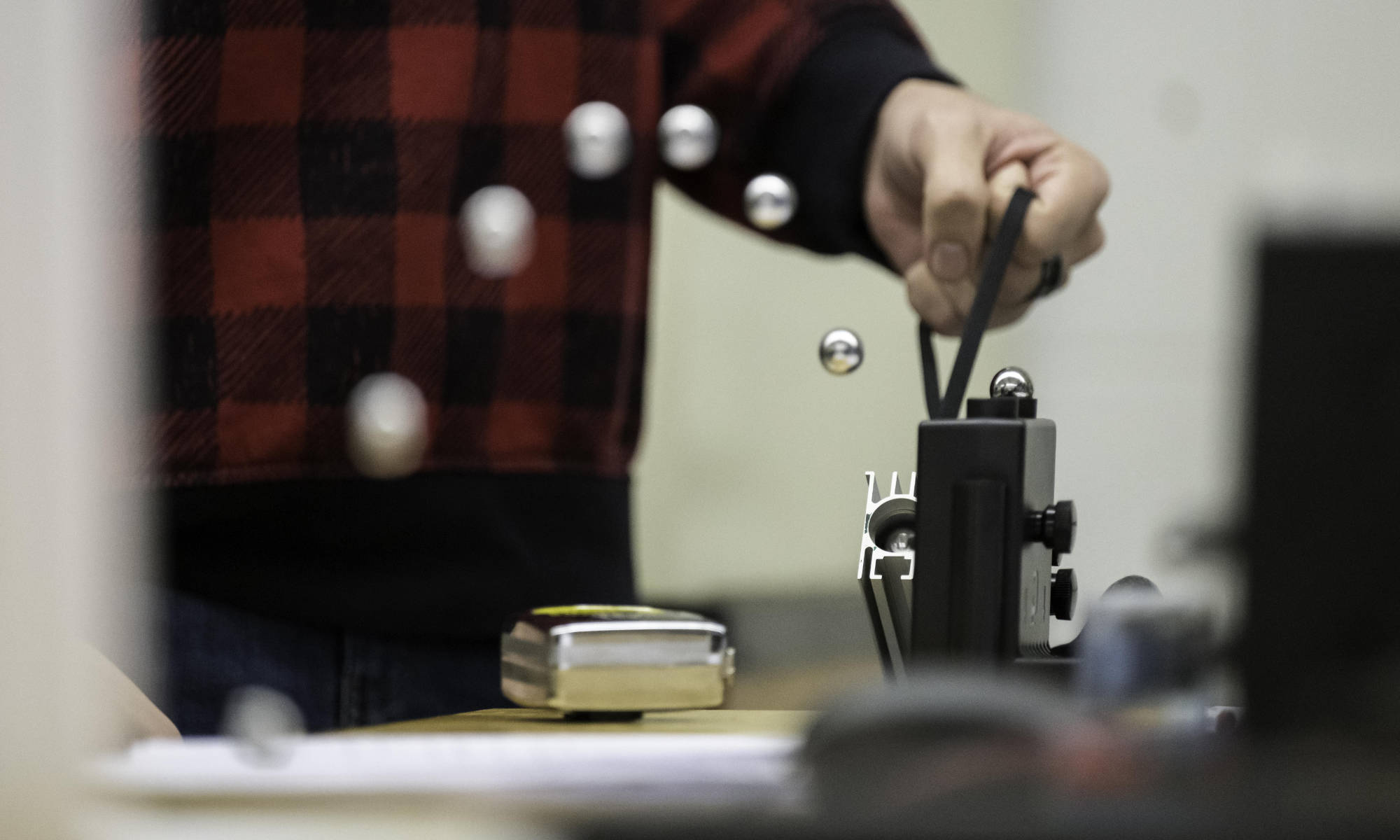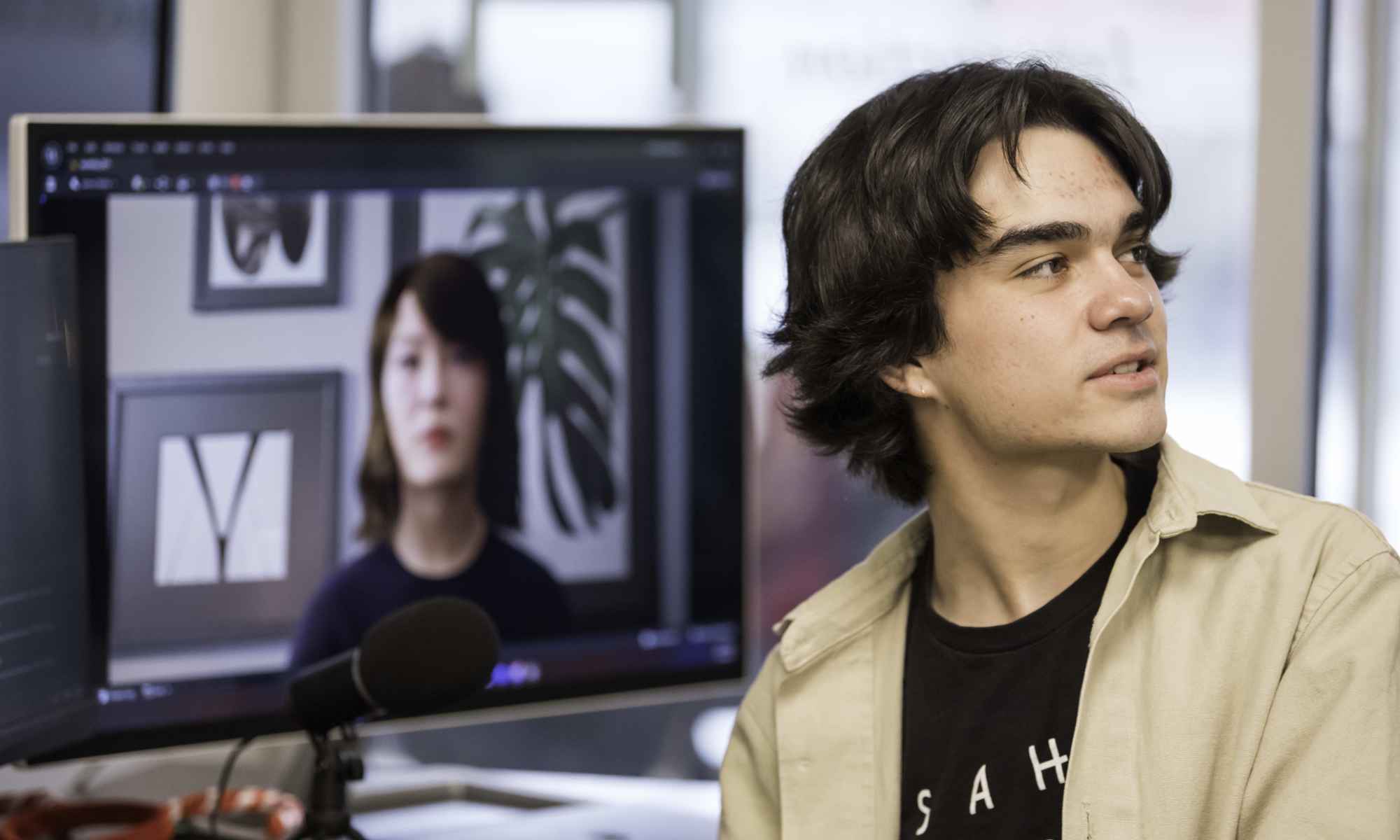Rochester undergraduates gained crucial systems engineering experience constructing a lunar rover for NASA’s Lunabotics Challenge.
Melbot V3 stands just two and a half feet tall and is made primarily of aluminum and plastic, held together with nuts and bolts. It can successfully complete its target tasks: to drive, dig, and deposit.
The silver mini robot was built in Rettner Hall on the River Campus by about 20 University of Rochester engineering majors who are members of the student organization UR Robotics.

“Melbot was a total team effort,” says Alex Saunders ’25, a mechanical engineering major from Calais, Vermont. “We’re very proud of our robot.”
The students began designing Melbot V3 last September for an annual spring competition called the Lunabotics Challenge, a university-based, yearlong event run and sponsored by NASA. Robots are tasked with driving, digging, and depositing regolith—the fragmented rock material that covers the moon’s surface—in a lunar simulant at the University of Central Florida (UCF) in Orlando.
The Rochester students finished 19th of the 43 teams invited to showcase their robotic rovers. Ten finalists made the short trip to the Kennedy Space Center for the two-day final round, with Iowa State University and the University of Alabama tying for first.
Lunabotics is in its 15th year, and Rochester joined in 2022. The “V3” in Melbot’s name is a nod to the third year of competition for the team.

“The first year was a lot of growing pains, learning what it was like to make a budget, keep to a schedule, put a robot together, and bring it down to Florida,” says Thomas Howard, an associate professor in the Department of Electrical and Computer Engineering and the UR Robotics advisor. “Last year was a virtual competition that involved a local demonstration of digging capabilities. This was the first year our students completed all three tasks, driving, digging, and depositing, at a formal competition.”
Students say that combining the lessons learned in their engineering classes with real-life engineering challenges was invaluable. Howard teaches a course on mechatronics each year along with a rotating schedule of advanced electives that concern different aspects of autonomous robots.
“The most useful direct learning comes from Professor Howard’s robotics courses,” says Saunders, who was the team captain and design lead. “But the main takeaway is developing team skills and ways of approaching an engineering problem.”

Creating a robot in six months
By late March of the 2023–24 academic year, the students had designed and built Melbot V3 using the basic system engineering principles outlined by NASA.
“We worked hard going from conceptual ideas to designing in CAD (computer-aided design) and manufacturing our robot,” says Bridgit Nguyen ’26, a mechanical engineering major from Ho Chi Minh City, Vietnam. “We were constantly troubleshooting. It was stressful but satisfying to finally figure it out.”
Saunders estimates he spent about 300 hours on the project—everything from administrative tasks, CAD work, design reviews, machining, assembling, testing, outreach, and writing to meet all the requirements for the competition.”

“It’s the most complex problem, engineering or otherwise, I’ve worked on and it truly required a multidisciplinary approach,” Saunders says. “If the mechanical, electrical, or software sides aren’t working together, we won’t get anywhere.”
The complex technological challenges of a fully autonomous robot required breaking the project into multiple tasks, assigning each task to a sub-team, and then coordinating across sub-teams.
“Building a functional robot as a stand-alone task can be easy, but when coupled with limited physical requirements, budget, committed time to the project, and manufacturing options, the challenge becomes ten times harder,” says Hesham Elshafey ’25, an electrical and computer engineering major from Tanta, Egypt. “And that’s what is great about it!”

Unexpected issues made for innovative solutions.
“Down at UCF, we didn’t bring the dust cover we had made for our electric box,” Nguyen says, “so we improvised one from a tablecloth and used the leftover cloth to make sure the washers—which weren’t the perfect size—were secured on our drivetrain’s shafts.”
Experiential learning was biggest prize for students

Experiential learning is a hallmark of an undergraduate education at Rochester, with many engineering students participating in senior design projects. Yet such immersive opportunities are not limited just to graduating seniors.
“One of the things our students ask for year after year is more engineering and design opportunities,” Howard says. “UR Robotics club gives students an opportunity to do this every academic year.”
Hisashi Lonske ’25, a mechanical engineering major from Boston, joined the UR Robotics club looking for a tangible project that revolved around design and problem solving. “I got exactly what I was looking for,” Lonske says. “While I was able to apply the math and concepts I learned in class to the creation of the robot, the problem-solving and critical thinking elements are the core of the Lunabotics project.”
Most of all was the joy of being part of a team working with a common purpose.

“Even though the club was split into sub-teams to work on various parts of the robot, those sub-teams would frequently talk with members of other sub-teams to bounce ideas off each other,” Lonske says. “The experience of collaborating in a team setting to achieve a single goal is particularly important for us future engineers. These kinds of experiences await us en masse beyond our time at Rochester.”
Josh Choi ’25, an electrical and computer engineering major from Long Island, performed much of the electronics, control, and software work for the project. He says the challenges and sleepless nights were worth it.
“It’s undoubtedly the highlight of my time at Rochester,” he says. “Having the opportunity to build a fully functioning robot from scratch while working alongside our team of awesome engineers was an invaluable experience I’ll always carry with me and will be crucial in my career going forward.”






